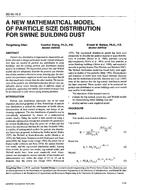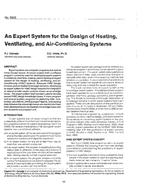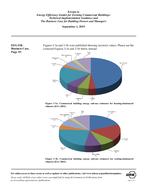Click here to purchase
Whole building water modeling is gaining traction in the marketplace with the adoption of the LEED Whole Project Water Use Reduction alternative compliance path and ASHRAE 191P Standard for the Efficient Use of Water in Building Mechanical Systems. As project teams explore various means of reducing water consumption; water treatment technologies have come into focus as a means of saving water in mechanical systems. This paper focuses on the procedures for quantifying both energy and water consumption, savings for treatment systems such as reverse osmosis and softening, and their impact on water use in cooling towers, boilers, and humidification systems.
Finally, this paper addresses variable water quality from potable and non-potable systems, and how that impacts energy and water performance in mechanical systems. The drive towards greater water savings introduced the use of non-potable water systems coming either from municipal sources or from on-site sources such as cooling coil condensate, roof rainwater, and reject water from process systems. These sources can be a great way to reduce water purchases, but treatment approaches may need to vary to account for new water chemistries, which impact water and energy use in mechanical systems.
Citation: ASHRAE/IBPSA-USA Bldg Simulation Conf, Sept 2020
Product Details
- Published:
- 2020
- File Size:
- 1 file , 1.7 MB
- Product Code(s):
- D-BSC20-C061


